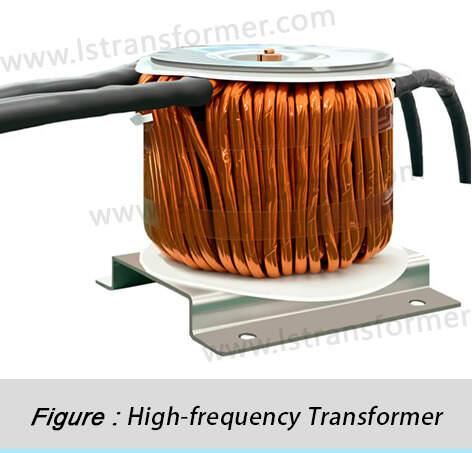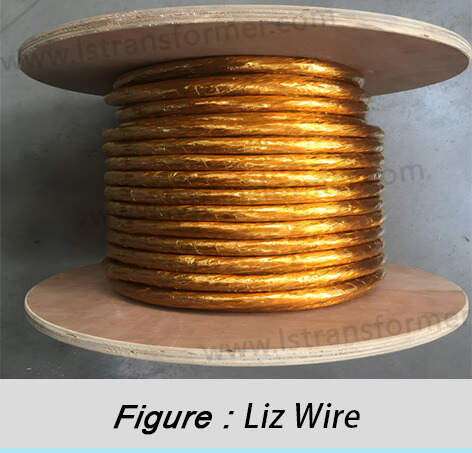Is Litz Wire Mandatory for High-Frequency Transformers? —An In-Depth Analysis of the Critical Role of Litz Wire in High-Frequency Applications
Is Litz Wire Mandatory for High-Frequency Transformers?
—An In-Depth Analysis of the Critical Role of Litz Wire in High-Frequency Applications
In the global electronic components market, high-frequency transformers, as core components for power conversion and signal transmission, have always been a focus for engineers and procurement specialists. With the widespread adoption of high-frequency applications such as switch-mode power supplies (SMPS), wireless charging, and renewable energy systems, the question of "whether Litz wire is mandatory" has become a hot topic in high-frequency transformer design. This article provides a comprehensive technical analysis of the necessity of Litz wire in high-frequency transformers, covering fundamental principles to practical outcomes, offering valuable insights for a global audience.
Content
1. Working Principles and Unique Challenges of High-Frequency Transformers
High-frequency transformers differ fundamentally from traditional low-frequency transformers in design philosophy and physical limitations. Understanding these differences is essential for evaluating the necessity of Litz wire.
The operating frequency range is the primary criterion distinguishing high-frequency from low-frequency transformers. The Institute of Electrical and Electronics Engineers (IEEE) classifies transformers operating above 20kHz as high-frequency transformers, while modern SMPS can reach frequencies in the MHz range. This high-frequency operation offers significant advantages in size and weight—according to Faraday's law of electromagnetic induction, transformer volume is inversely proportional to frequency, enabling high-frequency transformers to be over 80% smaller than their low-frequency counterparts at the same power rating.
However, high-frequency operation also introduces three major physical challenges:
● Skin Effect:The phenomenon where current density concentrates near the conductor surface as frequency increases. Skin depth (δ) is given by:
δ = √(ρ/πμf)
Where ρ is resistivity, μ is permeability, and f is frequency. For a copper conductor at 100kHz, the skin depth is only 0.21mm, meaning the central region of the conductor barely contributes to conduction.
● Proximity Effect:Uneven current distribution caused by magnetic interactions between adjacent conductors, further increasing AC resistance.
● Eddy Current Loss:Energy loss due to circulating currents induced by alternating magnetic fields, proportional to the square of the frequency.
These effects collectively cause the AC resistance (Rac) of high-frequency transformers using solid wire to be up to 10 times higher than the DC resistance (Rdc), drastically reducing efficiency. Data from the International Energy Agency (IEEE Std C57.110) shows that at 100kHz, additional losses in conventional windings can account for 60% of total losses, directly driving the demand for Litz wire.
2. Structural Principles and Technical Advantages of Litz Wire
Litz wire is a specialized conductor designed for high-frequency applications, with its core technology addressing skin and proximity effects through unique structural design.
The key feature of Litz wire is its multi-layer stranded structure. A typical Litz wire consists of multiple strands (up to 1,000 or more) of individually insulated thin wires twisted in a specific pattern, with each strand diameter typically less than twice the skin depth. This design achieves optimization in three aspects:
(1) Maximized Conductor Surface Area:Distributing the total cross-sectional area into multiple smaller sections ensures current is effectively spread across the entire geometry. For example, a 100-strand Litz wire with 0.1mm diameter strands offers 10 times more surface area than a single 1.13mm solid wire.
(2) Balanced Current Distribution:Layered twisting ensures each strand occupies different spatial positions in the winding, averaging out electromagnetic environment differences. Research by the National Institute of Standards and Technology (NIST) shows that well-designed Litz wire can reduce proximity effect losses by over 70%.
(3) Eddy Current Suppression:Insulation between strands blocks circulating current paths, fundamentally suppressing eddy currents. The International Electrotechnical Commission (IEC 60317-13) standard requires Litz wire insulation to withstand at least 1,000V at power frequency.
Frequency (kHz) | Conductor Type | Rac/Rdc Ratio | Temperature Rise (°C) | Efficiency (%) |
50 | Solid Wire | 1.2 | 25 | 95 |
50 | Litz Wire | 1.05 | 18 | 96 |
200 | Solid Wire | 4.8 | 65 | 82 |
200 | Litz Wire | 1.3 | 28 | 94 |
1000 | Solid Wire | 15.2 | 120* | 68* |
1000 | Litz Wire | 2.1 | 35 | 92 |
Table 1: Performance Comparison of Litz Wire vs. Solid Wire at Different Frequencies
3. Necessity of Litz Wire in High-Frequency Transformers
Whether Litz wire is "mandatory" depends on the technical-economic balance of specific applications. Key parameters for decision-making include:
● Frequency Threshold Effect:Experimental data show that Litz wire's advantages grow nonlinearly with frequency. Below 20kHz, Litz wire improves efficiency by only 1-2% but increases costs by over 30%. However, above 100kHz, solid wire often fails to meet UL/IEC safety standards due to overheating, making Litz wire essential. The EU Ecodesign Directive 2019/1782 mandates 93%+ efficiency for SMPS above 100kHz, effectively requiring Litz wire.
● Current Density Requirements:High-power-density designs (e.g., EV chargers) often require current densities exceeding 10A/mm². Under such conditions, even at 50kHz, solid wires suffer accelerated insulation aging due to localized heating. Litz wire reduces hotspot temperatures by over 40K, significantly extending transformer lifespan.
● Space Constraints:In ultra-compact applications like medical implants, winding space is extremely limited. Litz wire enables finer gauges without sacrificing performance. For example, in a 1MHz neural stimulator, 0.05mm Litz wire reduces volume by 80% compared to solid wire.
● Special Applications:
(1) Resonant Converters (LLC): Require minimal winding losses to maintain quality factor.
(2) Wireless Power Transfer: Operates at 85-205kHz with high efficiency sensitivity.
(3) Aerospace Systems: Demand lightweight and high reliability.
In these cases, even with a 50% cost increase, Litz wire remains irreplaceable. The International Space Station (ISS) power system audit reports that Litz wire transformers reduced system mass by 120kg, saving over $200,000 annually.
4. Alternatives to Litz Wire and Comparisons
While Litz wire excels in high-frequency applications, engineers should also consider alternatives for optimal design choices.
● Flat Copper Braids:Mitigate skin effect by reducing conductor thickness (<2x skin depth). Common in MHz-range planar transformers, advantages include:
(1)Better thermal performance (high surface-area-to-volume ratio).
(2)Precise winding geometry control.
(3)Suitability for automated production.
However, proximity effects are more pronounced, and complex multi-layer windings are challenging. DIN 46400 notes flat braids are 5-8% less efficient than Litz wire above 500kHz.
● Copper Foil Windings:Use foil conductors with thicknesses matching skin depth. TDK research shows foil matches Litz wire efficiency above 1MHz but has limitations:
(1)Difficult terminations, introducing extra contact resistance.
(2)Low mechanical strength, poor vibration resistance.
(3)Suitable only for simple, low-layer windings.
● Composite Conductors:Combine conductive (e.g., copper) and magnetic (e.g., nanocrystalline) materials. US Patent US20180301275A1 shows optimized performance at specific frequencies (e.g., 150kHz), but drawbacks include:
(1)High cost (~8-10x Litz wire).
(2)Narrow frequency adaptability.
(3)Limited long-term reliability data.
Parameter | Litz Wire | Flat Braid | Copper Foil | Composite Conductor |
Optimal Frequency | 20k-2MHz | 500k-5MHz | 1M-10MHz | 50k-300kHz |
Typical Rac/Rdc | 1.2-2.5 | 1.5-3 | 1.1-1.8 | 1.1-1.3 |
Process Complexity | Medium | Low | High | Very High |
Cost Index | 1.5 | 1.2 | 1.8 | 8.0 |
IEC Lifespan (Years) | 15 | 10 | 8 | 5* |
Recyclability | Yes | Yes | Yes | No |
Table 2: Comprehensive Comparison of High-Frequency Transformer Conductor Options
Whether Litz wire is mandatory for high-frequency transformers depends on the technical-economic balance of the application.
(1) For frequencies above 100kHz, efficiency requirements over 90%, and long-term operation, Litz wire is essential. Its unique structure mitigates skin and proximity effects, improving efficiency by 3-15%, reducing temperature rise by 20-40K, and extending lifespan 2-3x.
(2) For medium-power (50-100kHz) or space-constrained portable devices, Litz wire is recommended.
(3) For low-frequency, high-current, or cost-sensitive applications, alternatives like flat braids may be considered.
With tightening global efficiency standards and wide-bandgap semiconductors pushing frequencies into the MHz range, IEC 60317-compliant Litz wire is becoming the mainstream choice, with a projected 12.3% annual market growth. Engineers should base decisions on international standards, real-world testing, and environmental requirements for optimal outcomes.
Contact Us
LuShan, est.1975, is a Chinese professional manufacturer specializing in power transformers and reactors for 50+ years. Leading products are single-phase transformer, three-phase isolation transformers, electrical transformer, distribution transformer, step down and step up transformer, low voltage transformer, high voltage transformer, control transformer, toroidal transformer, R-core transformer; DC inductors, AC reactors, filtering reactor, line and load reactor, chokes, filtering reactor, and intermediate, high-frequency products.
Our power transformers and reactors are widely used in 10 application areas: rapid transit, construction machinery, renewable energy, intelligent manufacturing, medical equipment, coal mine explosion prevention , excitation system, vacuum sintering(furnace), central air conditioning.
Know more about power transformer and reactor :www.lstransformer.com.
If you would like to obtain customized solutions for transformers or reactors, please contact us.
WhatsApp:+86 17267488565
Email:marketing@hnlsdz.com

 EN
EN
 FR
FR DE
DE ES
ES


